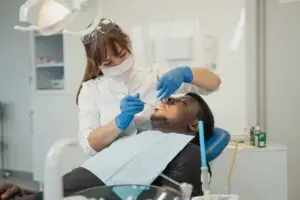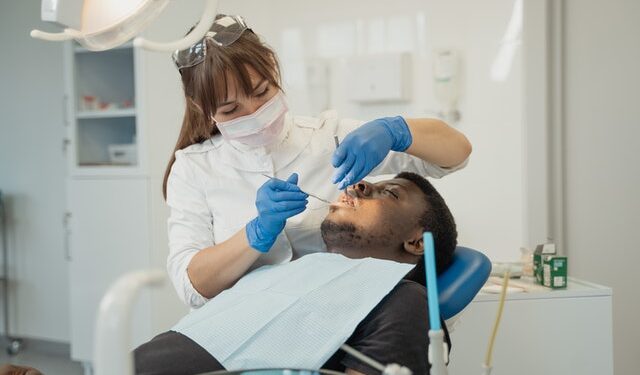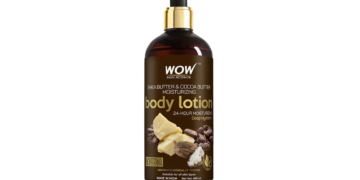
Teeth whitening has become so popular nowadays that everyone seems to be doing it. If you want a bright and white smile, teeth whitening is what you need. This is not only effective but can also change dramatically increase your self-esteem while smiling. Most teeth whitening products contain peroxide, which can whiten tooth enamel and make teeth whiter. The intensity of the bleaching treatment usually depends on the concentration of peroxide contained in the bleaching product. The percentages of peroxide in current bleach are 10%, 16%, and 22%.
When considering teeth whitening, the first thing you should do is to ask your dentist about the facts about teeth whitening. Only a dentist can tell you if your teeth and gums are healthy enough for teeth whitening. After that, you have to choose the method to whiten your teeth such as In-Office Bleaching, Teeth Whitening Trays and Gels, Teeth Whitening Strips, and Teeth Whitening Toothpastes.
Reasons for yellowing of teeth:
There are two reasons for the yellowing of teeth, which accelerates with age:
-
Thinning of tooth enamel
The outer teeth layer is composed of almost white enamel, which protects the deeper teeth structure. A layer of tissue called dentin is yellowish-brown. As the enamel layer becomes thinner or wears away, the teeth will turn darker. Acidic foods, gum disease, and aging can all cause teeth enamel degradation. For some people, the enamel is naturally thinner.
-
Stain
Certain foods and beverages (such as coffee) can stain teeth. Some products that stain teeth can also abrade teeth enamel and make them yellow.
Smoking and tobacco products and certain types of antibiotics are some sources of stains.
Implications for teeth whitening:
- Teeth whitening for aesthetic reasons.
- Remove childhood or later discoloration. The success rate of antibiotic-related discoloration or brown discoloration caused by dental fluorosis varies.
- Whitening by the intrachamber method is used to remove important, dark, and discolored teeth. This is a minimally invasive method as compared with traditional restorations (veneers, crowns).
- fillings cannot whiten, so it is recommended to whiten dark teeth before replacing the fillings. From the day of teeth whitening, the new filling should take about 2 weeks. Whitening produces whiter fillings that match the new, more natural tooth color, and sometimes even whiter than the patient expects.
Contraindications for teeth whitening:
- Mechanical damage or dental caries.
- A large number of fillings, crowns, bridges or veneers in the anterior tooth area.
- Poor oral hygiene and gingivitis.
- Allergy or hypersensitivity to glycerin and polyacrylic resin.
- Pregnant and breastfeeding women.
- The patient is under 16 years old.
How to maintain the whitening effect of your teeth?
Teeth always remain white after bleaching, but the color in certain foods and beverages can cause discoloration,
You should:
- Have a dental checkup and clean your teeth every 6 months.
- Maintain good oral hygiene (brush your teeth after each meal), use fluoride toothpaste or mouthwash (such as Advantage ORAL B or Listerine) at least twice a day, fluoride dental floss, or water thread.
Are there any side effects to teeth whitening?
Some people who use teeth whiteners may experience teeth sensitivity. What happens when bleach peroxide passes through the enamel into the soft dentin layer and stimulates the nerves? In most cases, sensitivity is temporary. This may delay treatment, try again.
Excessive use of bleach can also damage teeth enamel or gums. Therefore, be sure to follow the instructions and talk to your dentist.
Benefits of teeth whitening:
The benefits of teeth whitening have been discussed in dentistry. A clinical review of multiple studies found that only regular teeth whitening did not prevent gum disease. The same review found that those who had polished and scraped their teeth had significantly less plaque on their teeth.
Less dental plaque can preserve tooth enamel, which cannot be fully recovered after erosion or deterioration. Polishing teeth can also remove species of bacteria from reliable sources on the tooth surface.
“Polishing is a beautiful and healthy lifestyle. Although it can certainly improve the appearance of your teeth, it can also remove unwanted plaque and biofilm to create healthy gums”. Dr. Linhart , Linhart Dentistry, NY
Dr. Linhart agrees that the goal of polishing is not just a whiter smile. An important part of an effective polishing process is flaking, which occurs before polishing.
Tartar, which means scraping dental bacteria from teeth. The process of plaque and tartar usually uses sharp metal tools to remove hard-to-reach plaque that the toothbrush may miss.
Dr. Linhart explained that cleaning and polishing go hand in hand.
In our office, we clean every time with polishing paste or baking powder.
Combined with scraping, manual and mechanical scrapers can remove residues, but polishing can remove micro-precipitates and provide a smooth, clean surface for teeth.
Safety Precautions:
According to Dr. Linhart, “Polishing teeth is a fairly simple process and does not involve many risks. Some dental diseases may require gentler polishing methods“.
It is generally considered that polishing is safe for everyone. For very sensitive teeth, we can recommend cup polishing because it is less aggressive.
If the patient has severe erosion or premature tooth wear, Polishing can also be restricted.
Polishing alone cannot prevent tooth decay, unless it is part of tooth cleaning, including cleaning tartar and flossing in the dentist’s office.
To ensure that your teeth look their best, Linhart recommends brushing, scratching, and polish your teeth every 6 months, with one caution.
“No two patients are the same. In the case of periodontal problems or periodontitis, we can recommend polishing every 2 months“.
Outlook:
Few people have naturally white teeth, they turn yellow with age. However, perfect oral hygiene and regular dental check-ups can help keep teeth shiny.
Yellow teeth are usually not a sign of health problems, but your dentist can check for enamel loss and tooth decay.
Natural therapies can help people whiten their teeth at home. Dentists can also provide professional teeth whitening services.
And if you want to read more visit: https://www.indexmedica.com/treatments/teeth-whitening/










